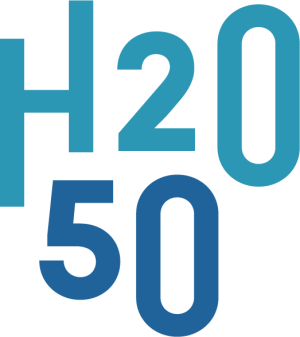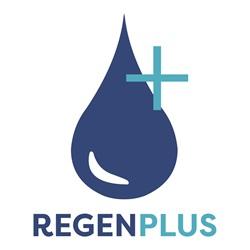Thinking small doesn’t rule out thinking big.
Today there are an estimated one and a half million private rainwater cisterns in Flanders, meaning that Flanders has the highest average density of rainwater cisterns in Europe and possibly even the world. Today, these wells account for a total storage capacity of at least 10 million m3. As rainwater cisterns are now obligatory in new constructions and for large-scale renovations, this capacity will only increase in the future. These cisterns are currently still stuck in the rationale of self-sufficiency at the household level: the cistern is intended to meet the water demand of the family, and to reduce consumption of drinkable tap water. However, a number of trends call for cisterns to be installed for different rationales, with new technology making it possible to explore collective rationales as well. But first: which trends can shed new light on the possible functions of our high rainwater cistern density.
There is the increasing intensity of rain showers, which requires a lot of holding capacity. There are persistent droughts, which put pressure on the water supply. There are trends in self-sufficient living and, under the influence of the corona crisis, much more homeworking. As a result, household water consumption appears to be increasing, which also causes rainwater cisterns to run out quicker. With the increasing realisation that water is not as infinite as we would like to think, it is a good idea to invest more in the smart design of the collective or at least coordinated management of our private rainwater cisterns. In addition, we can’t forget that rainwater is the result of a natural distillation process (i.e. a free purification process / free service from nature) and it would be a shame if, wherever rain falls back down to earth, we didn’t make use of it. Definitely if this goes hand in hand with further improvements in air quality. This happened during the lockdown, when significantly less dust was carried by raindrops through the air when they fell.
The main question is how we can make this abundance of small rainwater cisterns work together, based on a number of simple rules, so that we can spread out our demand for various sources of water (rainwater, ground water, surface water, drinking water, grey water, etc.) more widely in time and space.
In this context, navigation platforms such as Waze, Google Maps, etc. can provide inspiration. Detailed road maps are loaded onto these platforms, but their strength lies in the data provided by the large amount of users. If one car driver uses these platforms, it just functions as a regular GPS, suggesting a standard route with estimated time of arrival. The more drivers use the platform, the more functionalities suddenly pop up: e.g. congestion in certain roads and the decision rule to propose an alternative route.
Similarly, you can set up a platform for private rainwater cisterns, to which a simple digital pluviometer and altitude gauge can be connected. If only one cistern is connected to the platform, it will give you information about how much rain has fallen and how many litres are in your cistern. However, if you ramp this up to 100,000 and spread more rainwater cisterns over Flanders, we suddenly get insight into the actual rainfall, which cisterns are empty, the available buffer capacity, etc., distributed over time and space. And tailored actions can be proposed for your cistern: letting rainwater infiltrate, draining it into the sewers, using it for drinking water, injecting it into the drinking water network, draining it from the sewerage network, etc. Whereby the general basic rule for the water level in your cistern would be “Stay below the overflow level” and “Do not touch the soil”, by looking at the rainwater cisterns in the area.
The challenge for our water system is not to work out complex hierarchical and decision-making structures, but to define a number of simple control rules that we can all work with together.
We are experimenting in the first phase with a new governance: direct communication between the government and the citizen: e.g. the citizen is encouraged via a text to perform an action (to ensure that the buffer capacity of the rainwater cistern is maximised) and remain in control of an app in which citizens can consult each other’s water supply and exchange water between neighbours. We anticipate a wave of technological innovation: smart rainwater drainpipes that allow the water to run off into the ground or to the rainwater cistern in relation to the water level in the cistern. Gauge measurements, to partially empty the cistern, connected to the installation for using rainwater. The existing pump and telecommunication can then be used for both using rainwater and diverting rainwater to sewers at times when heavy rainfall is expected. New communication protocols. The crisis cells (Flemish, provincial and local) will also have to adapt their operations to this new way of thinking and working. In the second phase, we will go a step further. How can we make use of each other’s knowledge? Not only can the platform be filled with one and a half million private rainwater cisterns, but also with at least as many people with local knowledge about the water system, the weather and local needs.
Who will turn the rainwater cistern project into a true commons story? Who will help look for systems and platforms to jointly manage all rainwater cisterns - and, by extension, all minor buffer capacities? Who will help test how neighbours and local residents can use each other’s water or how farmers can use private cisterns and vice versa? What governance, technology, price calculations and payment models, and backup systems, are needed in this regard?
Effective cisterns thanks to RegenPlus (RainPlus)
RegenPlus (RainPlus) is a project to make rainwater management in Flanders smarter, and is a step towards a more climate-robust water supply. Using existing digital technology and sensors, we aim to demonstrate how rainwater cisterns can be used more effectively to make our system more resilient to extreme climate events.
What if we use sewers ánd buffers smartly in an industrial park?
At Tielt Noord business park ensuring sufficient water for business processes has been a concern among large water consumers for many years. But what if we move from individual water buffering (every (wo)man for themselves) to collective buffering?
By installing level meters and pumps in the cisterns and having them communicate with each other, the water can be controlled much better. The chance of flooding is reduced, and there is a larger water buffer for dry periods.
In addition, we focus on 7 extra aspects to win water (in Dutch)!
Download all catalysts
Disclaimer
The Flemish Environment Agency (VMM), De Vlaamse Waterweg, De Watergroep, Aquafin, the Flemish Department of Environment, Farys, Pidpa, water-link and VITO - Vlakwa have created the space for a group of fresh thinkers to develop a systemic view of water, and to challenge the water sector to shape a futureproof water system. The formulated ideas are not those of the initiators, nor do they represent their stands. However, they are considered valuable as an inspiration for the future of our water system.
This work is licensed under a Creative Commons Attribution 4.0 International License.


